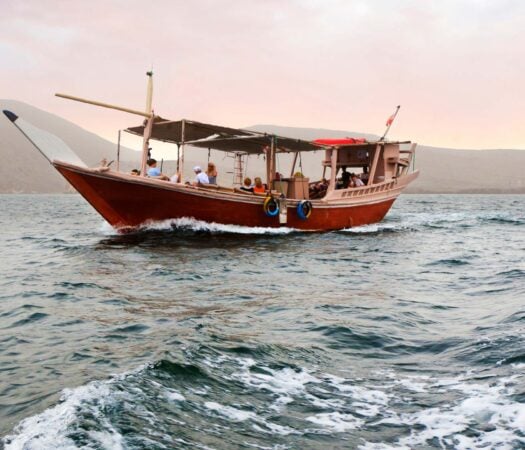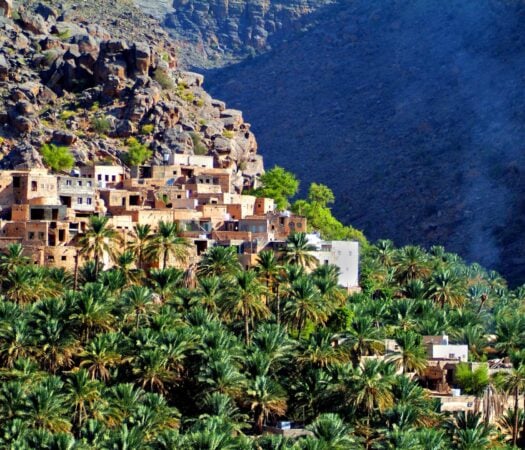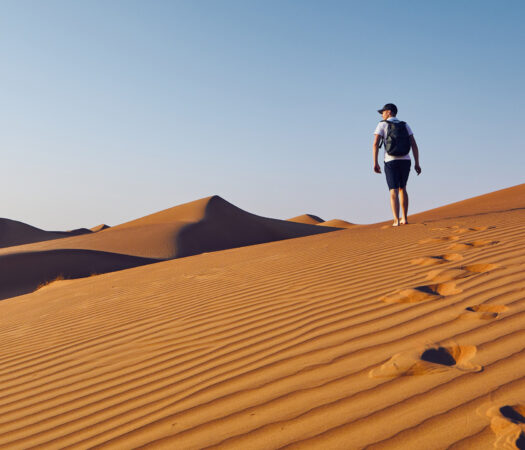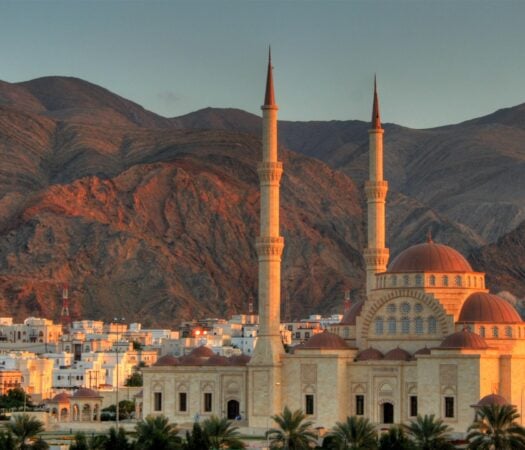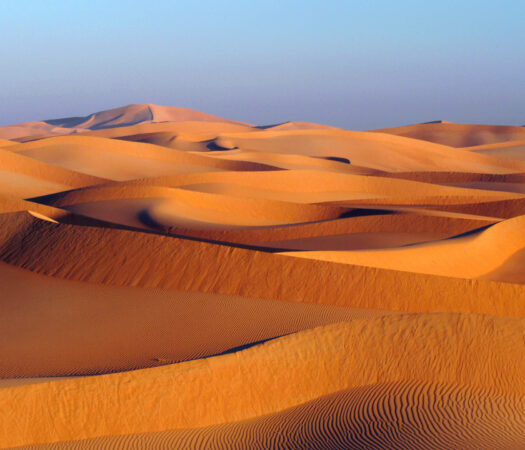Published on: February 23rd, 2024
Last modified: February 23rd, 2024
There’s an almost otherworldly feeling when looking out across Oman’s capital city of Muscat: upon first gaze, it doesn’t feel like a capital at all. Unlike its shiny GCC sisters like Dubai, Riyadh and Abu Dhabi, there are no glitzy high rises, no megastructures of twisting highways, but instead a whitewashed low-rise sprawl, extending beyond mountains to the sea, with only the minarets of mosques twisting up into the skyline. In many ways, Oman is the anthesis to the typical Gulf country – a region so synonymous with modern high rises and ultra-luxury – but in Oman, you’ll find none in site. This is a headstrong land focused on preserving its natural beauty and keeping tradition alive, and in turn, creating a tourism gem of culture, nature and adventure.
A country of striking natural beauty, of red deserts, sugar-soft beaches, waters abundant in coral and mountains of peaches, roses and pomegranates, Oman is taking a different approach to development and tourism, not pushing for the tallest or most modern, but the opposite, and in the process, ranking first in the region for sustainable tourism. This lack of futuristic planning and skyscrapers is no accident, but a carefully cultivated plan by ruler and keen environmentalist Sultan Haitham bin Tarik to preserve the country’s natural beauty and craft an urban landscape geared towards sustainability and innovation, where buildings harmoniously blend with nature. This decision has resulted in Oman remaining low rise, where a taste of the old Islamic empire can still be experienced in harmony with nature.
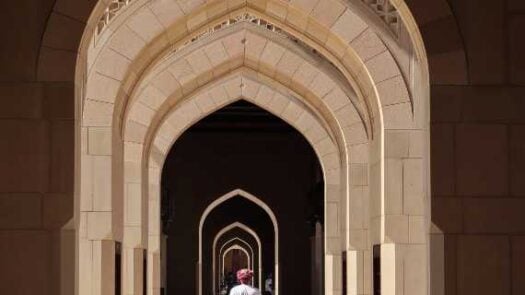
Sustainable Development Initiatives
The Sultanate’s low-rise, nature-filled capital is a microcosm of exactly what Oman wants to be, a direct dream of the late Sultan Qaboos bin Said. There’s no desire for mass tourism, development, or untamed modernisation. In fact, while modernising, Sultan Qaboos pledges to keep the country’s traditions and culture alive while preserving the natural abundance. In the process, he’s created a microcosm of futurist, green urban planning many tourism destinations could dream of.
This extended far beyond the ban on skyscrapers. In a world succumbing to over-tourism and batting the often-harmful effects of tourism, Oman has stuck to its ground but has yet to rest on its laurels. In Oman, natural resources aren’t exploited, but used to enrich the environment, build a pioneering new tourism industry and improve the quality of life for its people.
Oman ranked first in the Gulf Cooperation Council (GCC), third in the Arab world and 57th globally in the Sustainable Travel Index 2020 released by Euromonitor International, and things have only improved. Using its moderate oil wealth to enrich the country, rather than exploit, Oman has cultivated a sustainable tourism model where its most important asset – its natural beauty – is at the heart.
Alongside its ban on skyscrapers, Oman has many regulations in place to protect the environment. New hotels and resorts must follow strict environmental guidelines, including water and energy conservation, and the country works tirelessly to preserve its rich biodiversity. Nature reserves have been established, not reduced or destroyed, like Daymaniyat Islands Nature Reserve, where visitors can experience mesmerising coral reefs and colourful marine life.
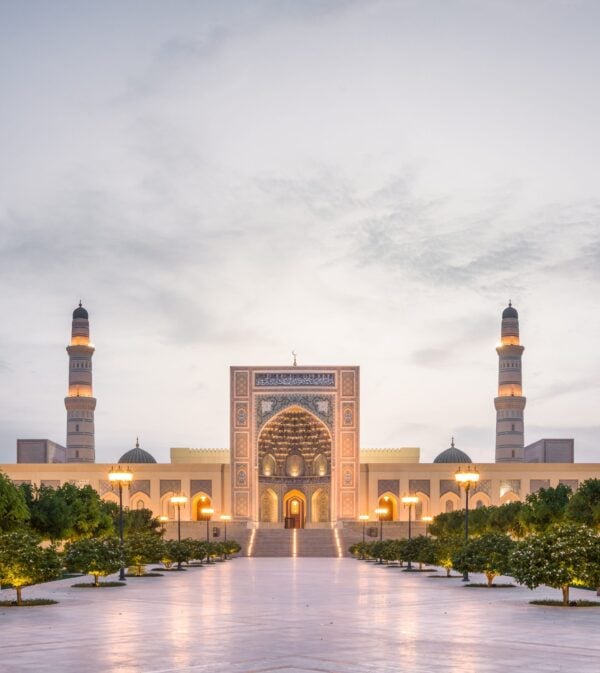
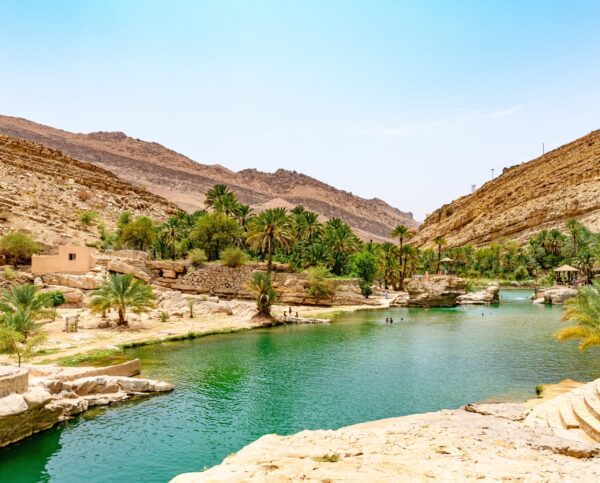
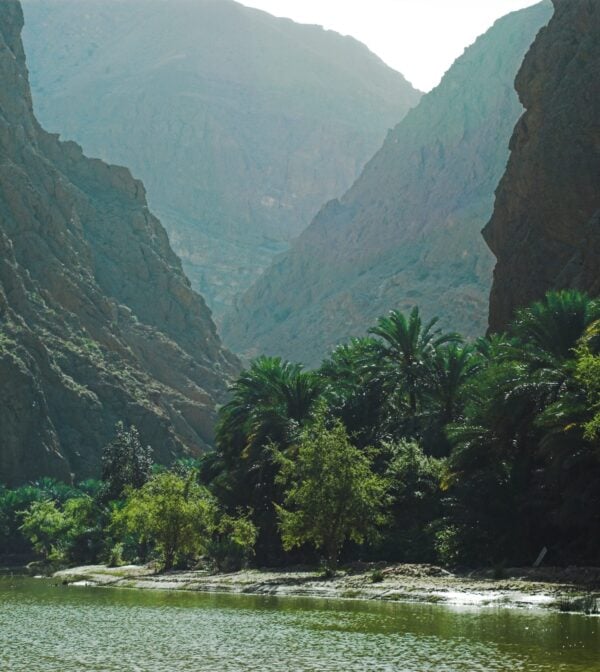
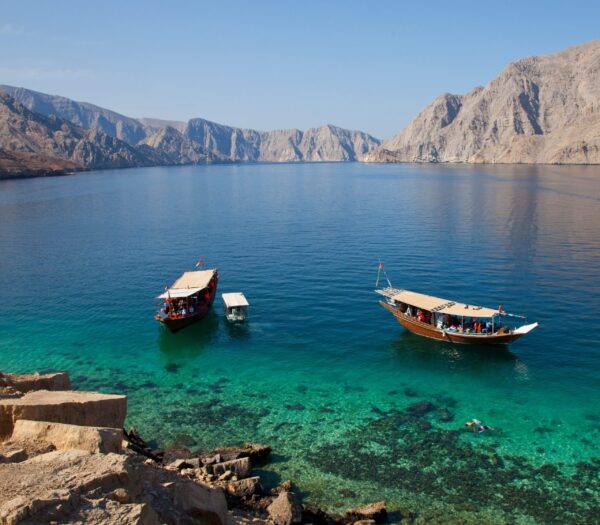
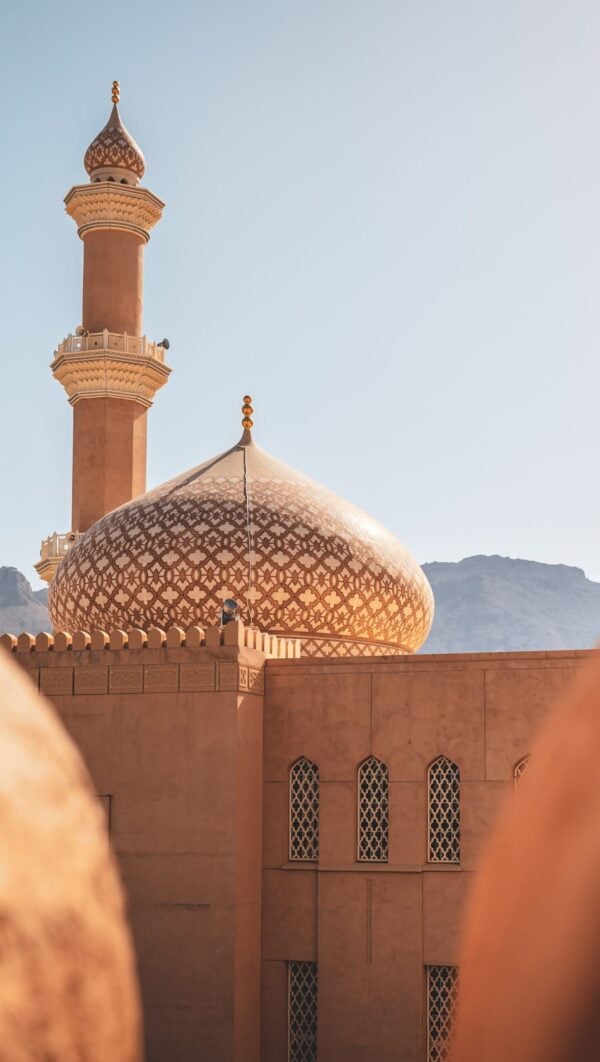
Oman’s Ban on Skyscrapers
Surrounded by skyscraper-mad countries like the UAE and Saudi Arabia, Oman’s ban – by Royal Decree, no less – may seem counter-futuristic, but in some ways, it’s the most progressive of them all. Without skyscrapers, no buildings tower over the breathtaking landscape, preserving its wonders for tourists and bolstering its tourism industry – the key to Oman’s weening off oil dependency. In fact, Oman is one of six countries in the Arab world to have achieved 60 per cent of the UN Sustainable Development Goals (SDGs).
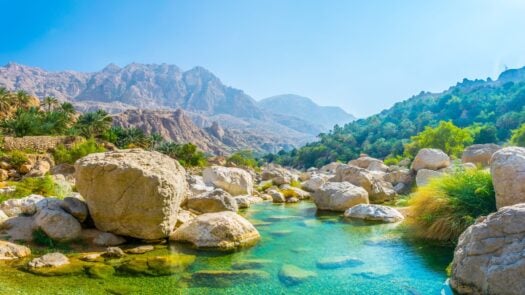
The ban aligns with Oman’s goals to preserve the country’s culture, a key pillar of its sustainable development goal and strategy. Omani traditions and heritage are of utmost importance, maintaining the low-rise, whitewashed aesthetic – drawing attention to the towering minarets of mosques dancing in the sun and signifying prayer and the importance of culture. In turn, this could lead to reduced energy consumption and carbon footprint, but importantly, it showcases Oman with nature, biodiversity and culture at the fore.
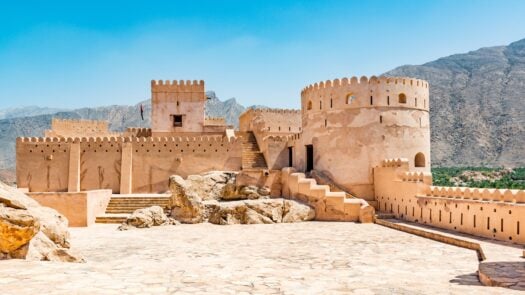
Oman’s buildings are capped at just five stories, and as a result, all eyes in the capital are drawn to the Sultan Qaboos Grand Mosque – the tallest building in Oman, lording over the Muscat skyline. An iconic site with its gold dome and creamy Indian stone walls, the mosque is an ode to the once mighty Islamic empire, which stretched across the ocean to Africa. Glistening in the sun, the 20th-century minarets rise 91 metres across the city, catching eyes from across the capital and cementing itself as one of the most visited spots in the city. Building along, not up, five-star resorts in Oman are sprawling, spacious and surrounded by unspoilt greenery and nature, even in the capital, Muscat, highlighting the surrounding mountains and historic sprawl.
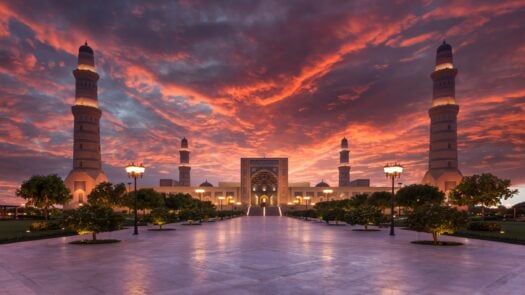
Positive Impact Travel in Oman
Stemming from its environmentalist Sultans, past and present, Oman ensures sustainability forms the bedrock of its tourism strategies, guaranteeing locals, residents, and hoteliers know the importance of its desire to preserve the country’s breathtaking topography and unique heritage. The county keeps Omani traditions alive, from crafts to music and dance – thrilling for tourists – and initiatives include community-based tourism, where the effects of tourism and increased visitors impact and nemesis the community. This, in turn, generates employment, improving quality of life and education and also preserving local traditions. Now, faced with other prospects outside of oil, Omanis can seek fulfilling and sustainable positions in the tourism industry – something the county is keen to wean itself off oil dependency.
In a region constantly pushing to deliver the tallest, biggest, and shiniest new building or attraction, Oman is doing things differently. Pausing, reflecting and acting in a considered way, promising a prosperous future enriching local lives, travellers, culture and community, but also protecting its most precious assets. Its ban on skyscrapers, along with other initiatives, creates a bountiful green oasis, with landscapes unobstructed and modernised – allowing one of the most beautiful, peaceful, natural, stunning destinations to travel to in the Middle East to thrive.


